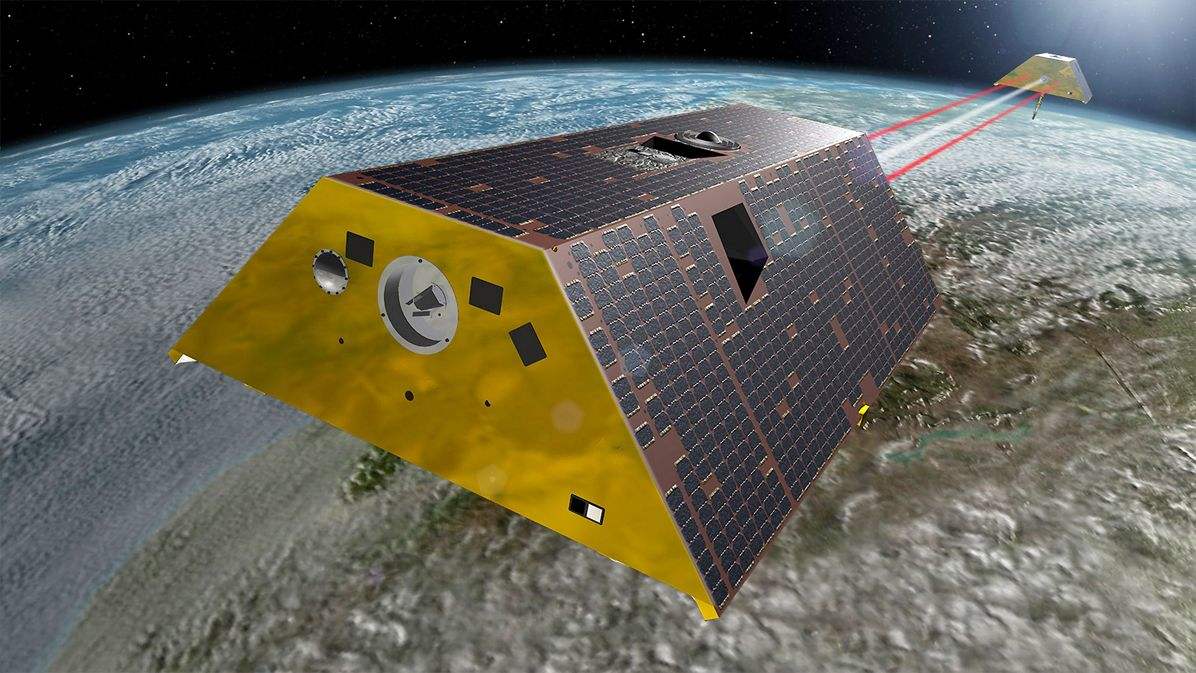The SpaceX Falcon 9 launch on 22nd May carried two German/American research satellites designed to measure changes in Earth's gravity field.
Along with another batch of five Iridium NEXT communications satellites, the SpaceX Falcon 9 launch on 22nd May carried two German/American research satellites designed to measure Earth's gravity field.
The twin satellites — built by Airbus in Friedrichshafen, Germany — will carry out the second, “Follow-On” phase of the Gravity Recovery and Climate Experiment (GRACE). The original two GRACE satellites orbited the Earth for 15 years until the mission was terminated in October 2017.
The GRACE-FO satellites will operate from a polar orbit of around 500km and with a distance of 220km between them. The mission is planned to last at least five years.
The satellites will constantly measure the distance between each other to within a few microns using a microwave system built at JPL. Variations in Earth's gravity field result in miniscule variations in this distance. At the same time, a sensitive accelerometer, built at Onera in France, will account for non-gravitational effects, such as atmospheric drag and solar radiation.
The GRACE-FO satellites will also feature a new inter-satellite laser ranging instrument, developed in a German/American joint venture, which will be tested for use in future generations of satellites. In addition, each satellite will record up to 200 profiles per day of temperature distribution and water-vapour content in the atmosphere and the ionosphere to aid weather forecasting.
The mission will continue the work of tracking Earth's water movement to monitor changes in underground water storage, the amount of water in large lakes and rivers, soil moisture, ice sheets and glaciers, and sea level caused by the addition of water to the ocean.
GRACE-FO is a joint project between NASA’s Jet Propulsion Laboratory (JPL) based in Pasadena, California, and the German Research Centre for Geosciences (GFZ) in Potsdam.

